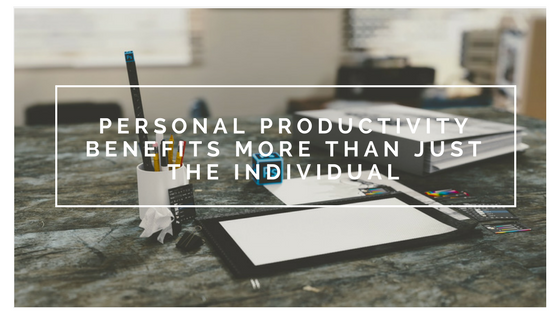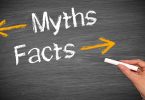When personal productivity increases, both the department/team and the organization benefit as well.
Organizations can only exist or function because there are people at work completing tasks that further the organization’s objectives. The more efficient and productive the individual, by extension, the more productive the organization. However, individual productivity not only benefits the individual and their own workload, it can also roll up into increased departmental or team efficiency and ultimately can impact the organization’s bottom line. When you think of it, there is a real business case for boosting individual productivity.
When individuals are productive and can effectively tackle a full workload, they begin to change the environment around themselves. They can access long-forgotten documents or notes regarding verbal agreements quickly and efficiently, thereby reducing confusion. They can tackle their own projects and have the time and energy to lend a hand to a peer when needed. They can stay on top of shifting and changing priorities and not get sucked into a tsunami of chaos.
With a few simple adjustments, anyone can boost their productivity and start to change the tide of overwhelm and overload. One of the biggest energy drains and time-wasters is the processing, handling, managing, filing, and retrieving of printed material. Not the trivial or meaningless papers that you easily toss, but the notes, reports, mail, documents, pamphlets, receipts, brochures, contracts, etc. that are important and need to be saved for retrieval at a later date. An effective strategy for managing printed material will not only save countless hours of futile searching or useless paper-shuffling but will also give you an increased sense of control over your own schedule.
I recently led a webcast that tackled this issue. The strategy I discussed was to build a habit of saving the printed material in digital format; either by snapping a picture of the item on your smartphone or by scanning the item. Either option transforms the printed material from something that takes up space and adds clutter; to a digital format that can be accessed by you or anyone you choose from a cloud drive anywhere in the world.
Think of the time savings when you handle a document only once, rather than several rounds of shuffling and sorting. Once it’s uploaded in digital format, you can add appropriate tags to help in the retrieval.
Think of the reduced frustration when you can access your meeting notes, or a contract, or a receipt from anywhere at any time, not just when you have the right file folder on-hand.
Think of the increased creativity when you can scribble, doodle, sketch, map, outline or write in any format on any surface and a simple picture on your smartphone will capture that creativity forever and allow you to share it if you choose (no need to save the cocktail napkin).
There are several tools available that you can use to manage and sort these captured photos or scans. I often use Evernote, OneNote with JotTrack (our free AIPMM productivity app). Whichever you choose you will find a huge boost in your personal productivity when information becomes easily saved, managed and retrieved which in turn benefits your team and the wider organization.
Check out my latest webcast for more information on how personal efficiency and productivity can be a game-changer! I include some details on how to turn this new twist on information management into an efficiency habit.





